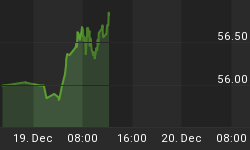This will be the first in a series of articles on asset allocation.
It is no secret that tactical asset allocation is my preferred framework for investing. Historically, the data supports such an approach, and intuitively, tactical asset allocation makes sense to me. It feels right. I am not re-inventing the wheel as there are a lot of books and articles on the topic. I just have my own flavor or "secret sauce" if you will. These are the strategies and insights that I write about in this blog, and I am hopeful that my models will set me apart. I am confident that they will.
There is a lot of literature on asset allocation and the following references are a great place to start:
Gibson, Roger C., Asset Allocation: 4th Edition, (2008)
Darst, David H., The Art of Asset Allocation: Principles and Investment Strategies For Any Market, Second Edition, (2008)
Ferri, Richard A., All About Asset Allocation, (2005)
Bernstein, William, The Intelligent Asset Allocator: How To Build Your Portfolio To Maximize Returns and Minimize Risk, (2000)
Swensen, David, Unconventional Success, A Fundamental Approach To Personal Investment, (2005)
Dalio, Ray,
"Engineering Targeted Returns and Risk", (2005)
Merriman-Cohen, Jeff, "The Perfect Portfolio", (2003)
Faber, Mebane, "A Quantitative Approach to Tactical Asset Allocation", (2007)
Essentially, the benefits of passive or active asset allocation are well known. For the most part, asset allocation reduces portfolio volatility without sacrificing returns, and the strategies give one the ability to profit in any economic environment. Often over looked and a very important consideration is the fact that asset allocation strategies are very easy for most investors to implement. I find tactical asset allocation suits me well because there is an 1) emphasis on a disciplined strategy; 2) emphasis on money management; 3) emphasis on risk management; 4) emphasis on investing not trading.
The bogey for success for most strategies is buy and hold SP500. That is, how does a strategy compare to buy and hold SP500. Is the return better? Is the risk profile improved? Can a strategy be easily implemented? Can the investor withstand the losses to a portfolio to achieve the necessary return? In general, greater returns are associated with increasing risk, and while "white hot" returns are always welcomed, I always question myself if I can sustain the draw downs or losses to my portfolio that are necessary to achieve such gains. Regardless what you do and how you do it, you want to make sure that the end result is better than buy and hold SP500.
So in this presentation, I will present the returns and risk for buy and hold SP500 from November, 1991 to March, 2011. This is our baseline. I have chosen this particular starting date as future articles in this series will be comparing my models (which start in this time frame) to buy and hold SP500.
From November, 1991 to March, 2011, buy and hold (passive) SP500 had a compound annual growth rate of 6.46%. $100,000 becomes $337,617. Figure 1 shows the equity curve for buy and hold SP500.
Figure 1. Equity Curve/ buy and hold SP500
Drawdown is the peak-to-trough decline (in percentage terms) of an investment, and it is measured from the time a retrenchment begins to when a new high is reached. Drawdown is a measure of risk. The maximum draw down for buy and hold SP500 is 56.24%. As of March, 2011, new equity curve highs have not been achieved. Therefore, the draw down is still ongoing having lasted more than 3.5 years. The draw down curve is shown in figure 2.
Figure 2. Draw down/ buy and hold SP500
It should be appreciated that buy and hold investors have "enjoyed" two draw downs greater than 45% in the last 10 years. For incurring this risk, these investors have been rewarded with a 6.46% CAGR. This seems rather excessive, and it clearly makes the case for a more active approach.
In the next installment of this series, I will look at buy and hold with the Dow Jones Composite Bond Index.















